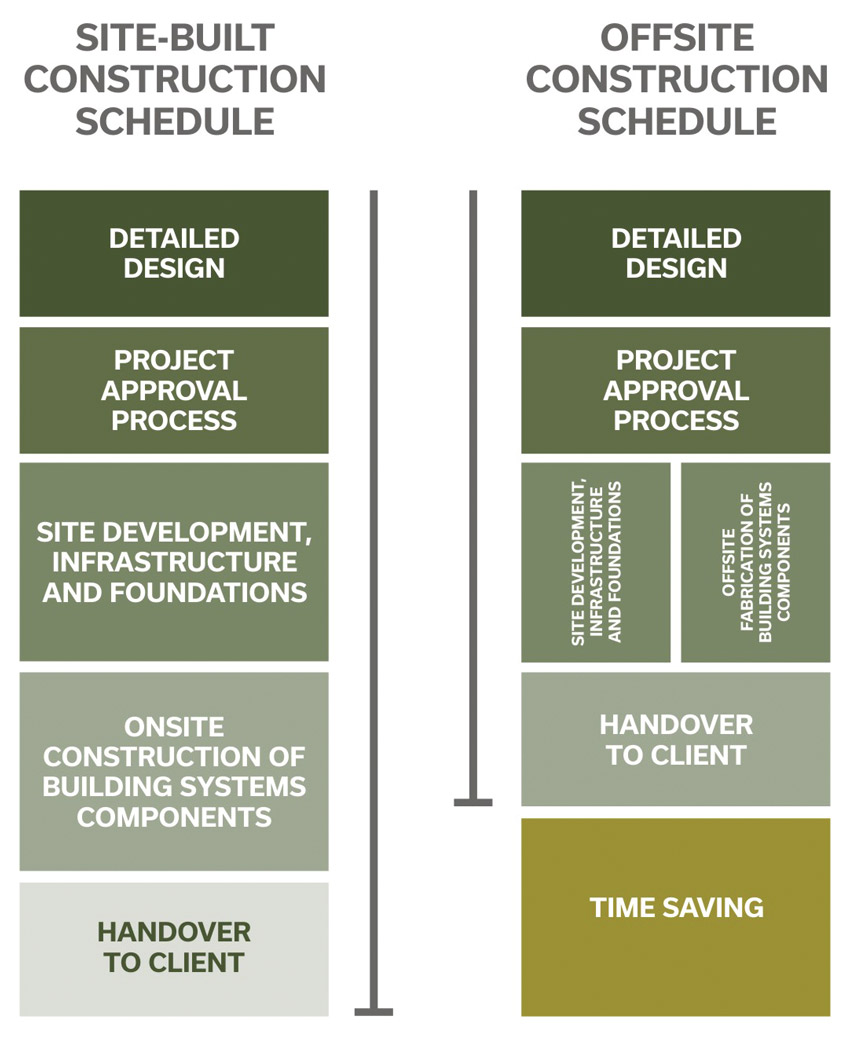Designing Sustainable, Prefabricated Wood Buildings
Design Flexibility
Wood can be used for an entire building or any combination of wall, floor/ceiling, and roof applications.
Its light weight and other characteristics make it highly adaptable to different types of projects, designs, and site conditions like soft soils or tight proximity to neighboring buildings. Kiln-dried wood products have superior dimensional stability, which is better for connection “stability” prior to installation and ensures good accuracy at installation. Wood elements can also be combined with other building materials, enabling flexibility in design, style, and finish architecture. When field modifications are needed, one of the advantages of wood over materials such as precast concrete is that changes can be made on-site with simple tools, pending approval by the engineer of record.

Because wood panels are manufactured for specific applications, they’re well suited to a high degree of prefabrication at the plant, equating to speed and efficiency of installation.
Thermal Performance and Energy Efficiency
Thermal conductivity is a measure of the rate of heat flow through one unit of thickness of a material subjected to a temperature gradient. The thermal conductivity of common structural wood is much less than the conductivity of metals with which wood is often mated in construction. It is about two to four times that of common insulating material.3
Solid wood panels also provide thermal mass, but the key measures of their thermal performance are U-value (coefficient of heat transfer) and R-value (insulating ability). Both are related to panel thickness. Thicker panels have lower U-values; they are better insulators and therefore require less insulation.
Because wood panels are manufactured using CNC equipment to precise tolerances, panel joints fit more tightly, resulting in a high degree of accuracy and better energy efficiency for the structure. Because the panels are solid, there is little potential for airflow through the system. As a result, an extremely tight building envelope can be achieved.
Resource Efficiency
Wood contributes to efficient use of the resource in several ways. One of the advantages of mass timber is that it can make use of smaller-dimension material that might not otherwise be used in structural applications. Also, since wood panels are manufactured specifically for each project, there is almost no job-site waste and manufacturers can re-use any fabrication scraps for stairs and other architectural elements or as biofuel.
In terms of overall resource use, the distinction between light frame and heavy construction is important. Mass timber was developed not as a replacement for light wood-frame construction but as a low-carbon alternative to heavy construction materials such as concrete and steel in building applications where light-frame construction is less appropriate, such as in taller buildings or office buildings where few partition walls and minimal floor vibrations are desired.
A mass timber building may require more total wood than a light-frame building, but when compared to steel or concrete in applications where all three are potentially applicable, advantages such as renewability, carbon offsets, low embodied energy, and operational energy efficiency make mass timber an environmentally preferable choice.










